
Salty Sam’s Fun Blog for Children
Number 311
Bird World
Hello Everyone

Miss Pringle is one of those teachers who thinks that education should extend beyond the classroom.
So when she heard that the Rocky Bay Animal World zoo was opening a new section called Bird World last year, she got in touch with the head keeper and booked a guided tour for her class.
lt was at the time, a cold time of the year, but she wanted her class to go to the zoo before it got busy with tourists later in the year. Then the keepers could give her class lots of attention. lf you are off school at the moment, l expect you would like to hear about their trip.
She told the children to wrap up warmly for their excursion. They could bring their cameras if they liked but she was going to provide them with worksheets and pens.
They had been looking forward to their trip for weeks.
A lot of the children had been off school with flu at the beginning of the year and luckily they had got better and were well enough to go back to school just in time to be included on the excursion to Bird World.
Well, l can tell you that they really enjoyed their afternoon at the zoo and they learnt lots of things.
You can see lots of little birds in your own garden but some of the birds in the zoo were much bigger. They saw owls, parrots, toucans and flamingos and also some cute little humming birds. There were also lots of exotic ducks swimming around on a large pond.
The penguins that were already there have a lovely new enclosure.
And the keepers were only too happy to teach the children a lot of things about birds.
Bill and Bob told me all about their trip when l saw them later and also what they had learned…
Birds are what are called bipedal animals. That means they have two feet which enables them to stand, walk and run and some of them can perch as well. (You probably know that bi means two – like bi in bicycle which means a vehicle with two wheels.)
Birds are vertebrates. That means they have a spine.
ln the past they evolved from feathered dinosaurs.
There are about 10,000 species of bird and so they are the biggest group of vertebrates in the world. That is about double the number of species of mammal.
About two thirds of the species are found in the tropical rainforest.
There are more chickens than any other kind of bird.
Birds live on all the continents including the Arctic and the Antarctic.
They range vastly in size from the tiny humming birds that can be as little as 5cm long to an enormous ostrich.
The biggest bird is the ostrich and can be well over 2½ metres tall. lt can run at over 50 kph on its long legs. The smallest bird is the bee humming bird from Cuba. lt measures less than 5cm from the tip of its long beak to the end of its tail. lt weighs only 2g. lts eggs are only about 1cm long whereas an ostrich egg is usually about 18cm long.
Birds have wings, but some of them fly and some of them can’t. Penguins use their wings as flippers when they swim underwater looking for food. Humming birds can fly backwards as they flit from flower to flower looking for nectar to eat through their very long beaks.
One of the reasons birds can fly, is that their skeletons are strong but very lightweight.
The wandering albatross has the largest wingspan of any bird, over 3½ metres from wingtip to wingtip. lt is wider than the smallest aeroplanes and can soar on wind currents for miles over vast expanses of ocean. lt can fly for hours without moving its wings at all.
Birds have beaks but no teeth so they swallow their food whole. Hens swallow grit and small stones which help to grind food up in their stomachs.
There are many different shapes of beaks. This is because birds eat different types of food. The tiny bills of finches can poke into plants to get seeds and large beaks like that of a pelican, which can be up to 60cm long, can scoop up a big fish. Woodpeckers have sharp tips to their beaks that they can use to peck into the side of trees to make a home.
Owls cannot digest the bones and fur of their prey so they regurgitate them up and out of their beak in the form of a pellet with other undigested bits of food. Owls cannot swivel their eyes but they can move their heads right round over their shoulders. Their feathers are very soft and almost noiseless when they fly so that their prey does not hear them coming in the darkness. The feathers can get easily waterlogged though, so rainy nights are not good hunting nights for owls.
A lot of flightless birds like ostriches and emus have very soft, fluffy feathers. The feathers on birds that fly, like eagles and falcons, are much stiffer.
lt looks like birds’ legs bend in the opposite way to ours, but in fact what looks like a knee half way down their leg is an ankle, and what looks like a foot is just their toes. Their knees are high up at the top of their legs and are usually covered in feathers.
You might wonder how birds don’t fall off a branch when they fall asleep. Well, this is because their tendons clench up and the toes grip automatically.
Sooty terns keep on the wing for 3 years or more. They can sleep while they are flying. Swifts can fly up to 160 kph and they too can stay in the air for two or three years at a time. They feed, drink and sleep while airborne.
The fastest flying bird in a dive is the Peregrine Falcon. lt averages speeds of over 180 kph.
Some birds have very colourful plumage, especially tropical birds, and so they are much more colourful than most other animals. But some birds are less colourful so that they can blend into their surroundings – the word for this is camouflaged.
Birds are warm-blooded animals but their blood temperature is different from that of mammals, their average temperature is slightly higher which means that they have to be constantly looking for food to maintain their energy levels.
Birds inhabit a lot of different environments. They cannot sweat like we do when they are hot, so they have to employ different ways of regulating their temperatures.
lf they get hot, they find some shade, they move about less, they pant, they find water to drink and they lose heat from their legs, or in the case of vultures, for example, their featherless necks.
lf they get too cold, they fluff up their feathers to increase the insulation that their feathers give them. Some birds, like ducks, stand on one leg to reduce heat loss.
Feathers are very good at repelling water and this helps to keep birds dry – being wet makes you colder.
A lot of birds migrate as the seasons change just so they can move to an environment that will be better for them when the cold weather comes. About 20% of species migrate. They can sense changes in air pressure which tells them the weather is changing and it is time for them to move.
Birds lay eggs. Eggs are usually incubated by their parents, sometimes just the female, sometimes just the male and sometimes the parents take it in turns. That means that they keep the eggs warm as the baby chicks grow inside.
A finch waits only 12 days for her eggs to hatch but a royal albatross has to sit on hers for 79 days. Puffins build nests underground to keep their babies away from cold weather.
Most parents also take care of their babies for a while after they have hatched and then even after they have left the nest.
Water birds are just about ready to leave the nest as soon as they hatch and yet water bird parents, generally speaking, tend to stay with their offspring for a longer period than songbirds. You will see families of swans and coots staying together all summer.
But famously, a cuckoo passes on the job of hatching their eggs and feeding their young to other birds. The female looks for a nest full of eggs and pushes one of them out. She lays her egg in its place. When the baby cuckoo is born it pushes out its rivals until it is the only bird left in the nest. The foster parents continue to feed the cuckoo chick even though it may become four times bigger than they are.
Birds are usually quite social creatures living in flocks or colonies, like crows and starlings and penguins, but some prefer to be alone like robins who fight viciously to defend their territory.
A lot of birds choose a mate and stay with them for years, like swans and flamingos.
Birds communicate with calls and body language. When birds are perched in trees they are not always visible because of the dense foliage so they have developed a way of calling to each other – and a lot of bird song is very beautiful.
Some birds are so intelligent they can use tools to perform tasks. The most intelligent birds are probably the corvids.
This group includes crows and jays. They drop stones on things to break them open; they use sticks to poke things. These abilities help them to find food.
Gulls too, have been seen to drop stones onto shell fish to break open their shells. The gulls teach their babies to do the same thing.
Some birds, like some parrots, can mimic sounds they hear, including human speech and so it sounds as though they can talk like people.
A lot of birds have brightly-coloured plumage, especially the males, that they use to send signals to other birds – in the bird’s world it means that they are strong and magnificent, which is a warning sign to other males and an attractive feature to females.
Birds are not without problems though. Unfortunately, a lot of birds are kept as pets in small cages because of the beauty of their plumage and song. Some are losing their habitats at an alarming rate, and it is estimated that over 10% of the world’s population of birds are endangered species.
Luckily, the birds in Rocky Bay Animal World are well-looked-after. They have very pleasant enclosures and lots of room to move and fly.
They should live a happy life and educate people for years to come – and l hope you enjoyed my quick tour of the amazing world of birds as much as the children enjoyed their educational trip!
Bye bye everyone – don’t forget to subscribe to my blog!
lf you like my blog, please support it by telling all your friends and followers about it.
Thank you!
And see you again next Fun Friday!
Love and kisses
Salty Sam

www.christina-sinclair.com

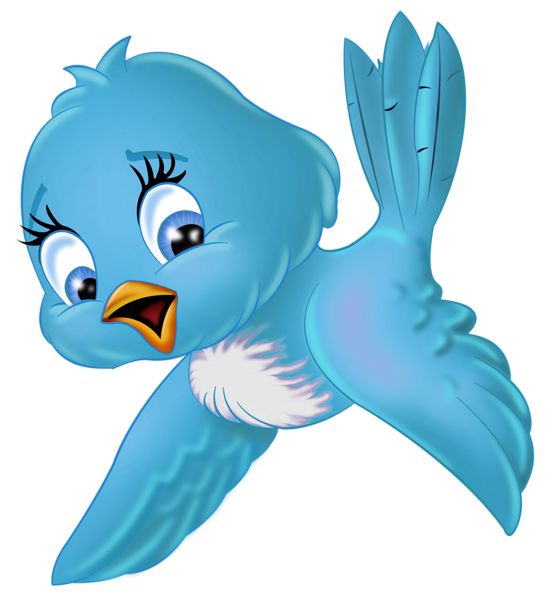
Bill and Bob’s Joke of the Week![]()
![]()
Bill: What did the duck say when she bought a new lipstick?
Bob: l don’t know. What did the duck say when she bought a new lipstick?
Bill: Put it on my bill!

Salty Sam © Christina Sinclair 2015
Unauthorized use and/or duplication of material from this blog without express and written permission from this blog’s author and owner is strictly prohibited.
Links may be used to www.christina-sinclair.com

Picture Gallery
 Toucan
Toucan
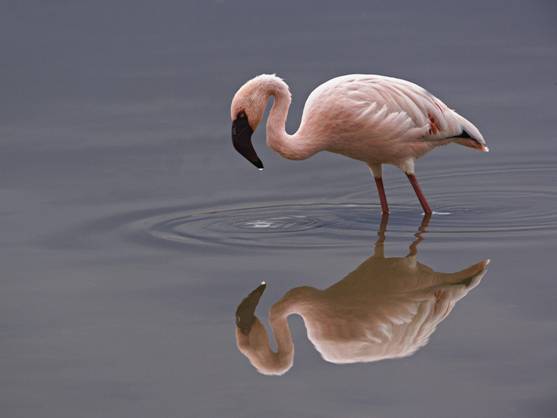 Flamingo
Flamingo
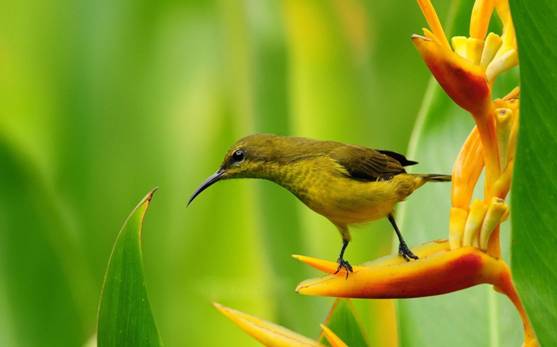 Humming bird
Humming bird
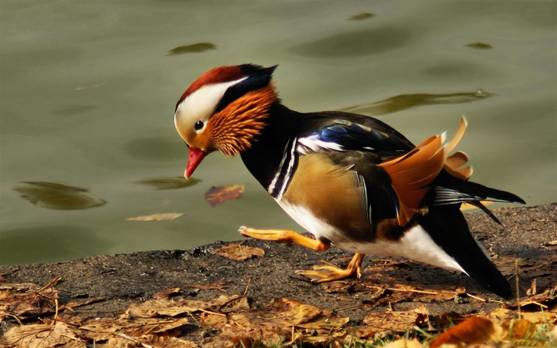 Mandarin duck
Mandarin duck
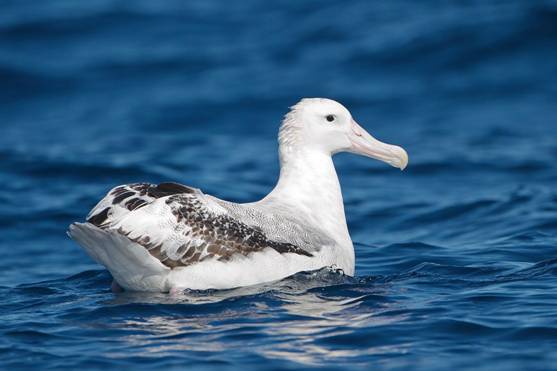 Wandering albatross
Wandering albatross
 Sooty tern
Sooty tern
 Owl
Owl
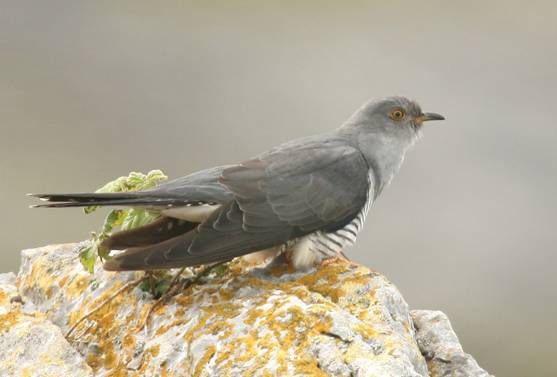 A cuckoo
A cuckoo


 THE SALTY SAM NEWS DESK
THE SALTY SAM NEWS DESK

Captain Jack had a bit of an accident this week.
He broke Mrs Miggins’ teapot!
Yes, what a terrible accident! He broke the spout right off!
Captain Jack felt really badly about what had happened, so he went straight round to the Rocky Bay Department Store and bought his landlady a new teapot without delay.
The old teapot was no good to use of course – if you were to fill it with hot water the tea would just dribble out of the front of the pot all over the tea tray!
Captain Jack is always happy to have an excuse to go round to see Auntie Alice – she does make exceedingly good cakes, and so he decided to take the broken pot to her so that she could smash it up and use the broken pieces in the bottom of her flower pots to help with drainage under the compost.
Waste not, want not!
Besides that, Auntie Alice had sprained her ankle and was not able to get out to the shops. She desperately needed some groceries taken round to her cottage.
When Auntie Alice saw the broken teapot she thought of a much better use for it.
She hung it up in a hedge in the garden. She pushed it right into the hedge so that it would be sheltered from the worst of the wind and rain. She tied the handle to a branch with a length of string to make sure it was really secure.
She told Captain Jack she was sure that in no time at all, a little robin would make use of it as a home to lay eggs in. After all it wouldn’t be long before the nest building season would be upon us.
Robins love places like the broken teapot to build their nests in.
Captain Jack thought it was a much better idea than smashing it up completely.
Then they went inside for a socially-distanced chat. He carried her shopping in for her.
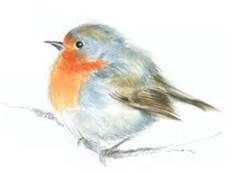
Auntie Alice made him a nice cup of tea – accompanied by a large slice of chocolate cake.
But Auntie Alice was not very happy.
Over several cups of tea she told Captain Jack all about her worries.
She had found some earthworms in the roof of her cottage.
Yes you did read that right. How do worms get up into the roof of a cottage?
It is a good question.
The whole point was that the thatch on the cottage was getting very old and a bit mushy in parts and definitely needed replacing.
She had already got in touch with Reckitt and Stackett the Rocky Bay builders, and to do the whole job would not be cheap!
She had to get the money from somewhere – and quite soon. She wanted a new roof to be put on in the summer – before the next winter snows came.
Captain Jack said that Auntie Alice needed to find some ways of making some extra money to help out with the bill for the new thatch.
So they discussed at length what she could do.
This is what we call brainstorming. They had a brainstorming session!
After much tea and cake the two of them came up with four really wonderful ideas. They would use the resources and skills she already has to start up some new ‘revenue streams’.
Auntie Alice was very excited. Captain Jack said he would help her.
The first idea was to sell some of the vegetables Auntie Alice grew in her big garden. She always had so many it was hard sometimes to know what to do with them all.
The second idea was to get some chickens and sell eggs as well.
There was plenty of room in her garden to keep chickens.
The third idea was to keep bees and sell products from the hive. Auntie Alice could sell honey and beeswax.
She would get in touch with her friend Betty Clutterbuck who owned the Rocky Bay Tearooms and ask her if she would be interested in buying some of the ingredients she needed to make her cakes from Auntie Alice.
The fourth idea was very clever.
A lot of people have been talking about how balloons are not environmentally friendly. When they are released they fly off into the sky never to be seen again.
But the problem is they do eventually come down somewhere. The balloon takes ages to rot away and so does the string. In fact, at this point the balloon really becomes litter. The string can even get wrapped around a bird or animal.
This is not a nice thought.
Chinese lanterns are not much better. One lit one came down in a tyre dump once with terrible consequences.
Captain Jack said that bird releases are a lot more environmentally-friendly.
He said that Auntie Alice could have a dovecote in her garden.
They could take the doves to fairs and weddings and parties and release them.
The birds would then fly back home to Auntie Alice’s garden and she could use them again and again!
Captain Jack said Cousin Hamish knew all about training homing pigeons. He could give her some advice.
Captain Jack would take the birds to the parties in his car and Auntie Alice could look after the doves in her garden and they would share the profits after the petrol and bird seed was paid for.
So Auntie Alice went to the telephone to give Betty Clutterbuck a call and then she rang me to ask for my help too.
And Captain Jack said he would go home to find some plans to build a chicken coop and a dove cote.
Bee hives have to have parts that are all of a standard size, for various reasons, so they decided it might be better to buy them. The honey frames have to fit into a honey extractor and all the frames inside the hive have to be at the right distance apart for the bees to be able to walk between them.
The plans they had made together were all very exciting!
Then Captain Jack went home – taking some cake with him.


*********************
TO ADVERTISE ON THIS BLOG
PLEASE CONTACT:
christina.sinclair.ads@aol.co.uk
*********************


Quick Quiz
Can you spot these species of birds?
- o _ t _ _ _ h
- c _ _ w
- s _ _ n
- e _ _ l e
- a _ _ _ _ o _ _ s
- p _ f _ _ n
- s _ _ g _ _ l
- f _ _ c _ n
- o _ p _ _ y
- c _ _ _ h _ n
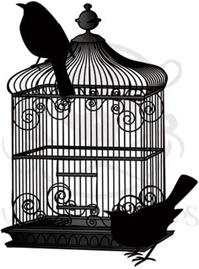



lt’s the Weekend!
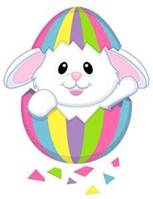
HOW TO MAKE AN EASTER BUNNY EGG COSY
This is such a cute little egg cosy.
If you prefer to have an Easter chick egg cosy, just make it in yellow, don’t put any ears on it and put an orange triangular beak on the front of the face instead of a triangular pink nose.
If you would like to make a few as presents, you will have plenty of time between now and Easter to knit them.
RABBIT EGG COSY BODY AND HEAD (KNIT ONE)
Using 3¾mm knitting needles and white yarn cast on 32 stitches
(Knit 1, purl 1) repeat the last 2 stitches to end of row
Repeat the last row 3 times (4 rows of 1×1 rib)
Change to 4mm knitting needles
Knit 22 rows of stocking stitch
Don’t cast off just leave your stitches on the end of the yarn after you have cut it off
RABBIT EGG COSY OUTER EARS (KNIT TWO)
Using 4mm knitting needles and white dk yarn cast on 4 stitches
Knit 8 rows of garter stitch
Decrease 1 stitch at the beginning of the next 3 rows
Cast off
RABBIT EGG COSY INNER EARS (KNIT TWO)
Using 4mm knitting needles and white dk yarn cast on 3 stitches
Knit 8 rows of garter stitch
Decrease 1 stitch at the beginning of the next 2 rows
Cast off
TO MAKE UP
- Pull in the top of the head
- Sew the back seam of the head and body using over-sew stitching and right sides together
- Turn the right way out
- Stuff the head only
- Secure a length of yarn into the back of the neck and bind it tightly around the neck twice encasing the stuffing inside the head
- Sew on two black eyes and three pink stitches into the shape of a triangle to make a nose
- Sew the pink inner ears to the white outer ears and sew some stitches in white yarn across the base of the ears to pinch in the bottoms
- Sew them together at the bottom and then sew them to the top of the head
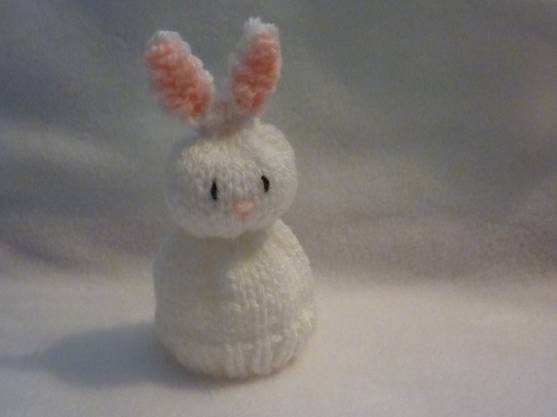
Please note that the material on this blog is for personal use and for use in classrooms only.
It is a copyright infringement and, therefore, illegal under international law to sell items made with these patterns.
Use of the toys and projects is at your own risk.
©Christina Sinclair Designs 2015


Quick Quiz Answers
- ostrich
- crow
- swan
- eagle
- albatross
- puffin
- seagull
- falcon
- osprey
- chicken

Osprey
For a wonderful display of birds checkout my Pinboard at:
https://www.pinterest.co.uk/TheSaltySamBlog/birds/
Beak shapes and how they are used…
If you don’t understand any of the words, look them up in a dictionary.

tumblr.com


